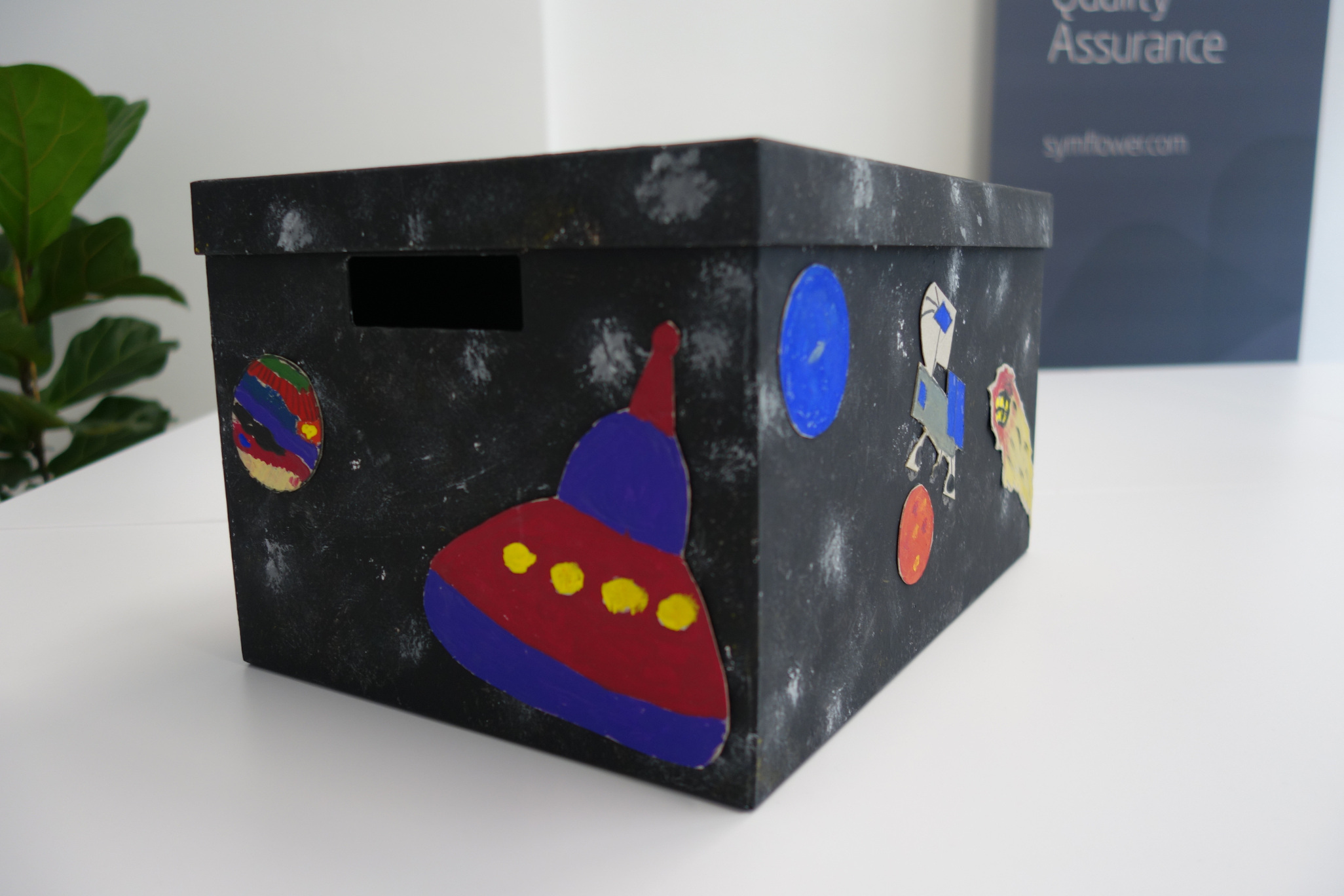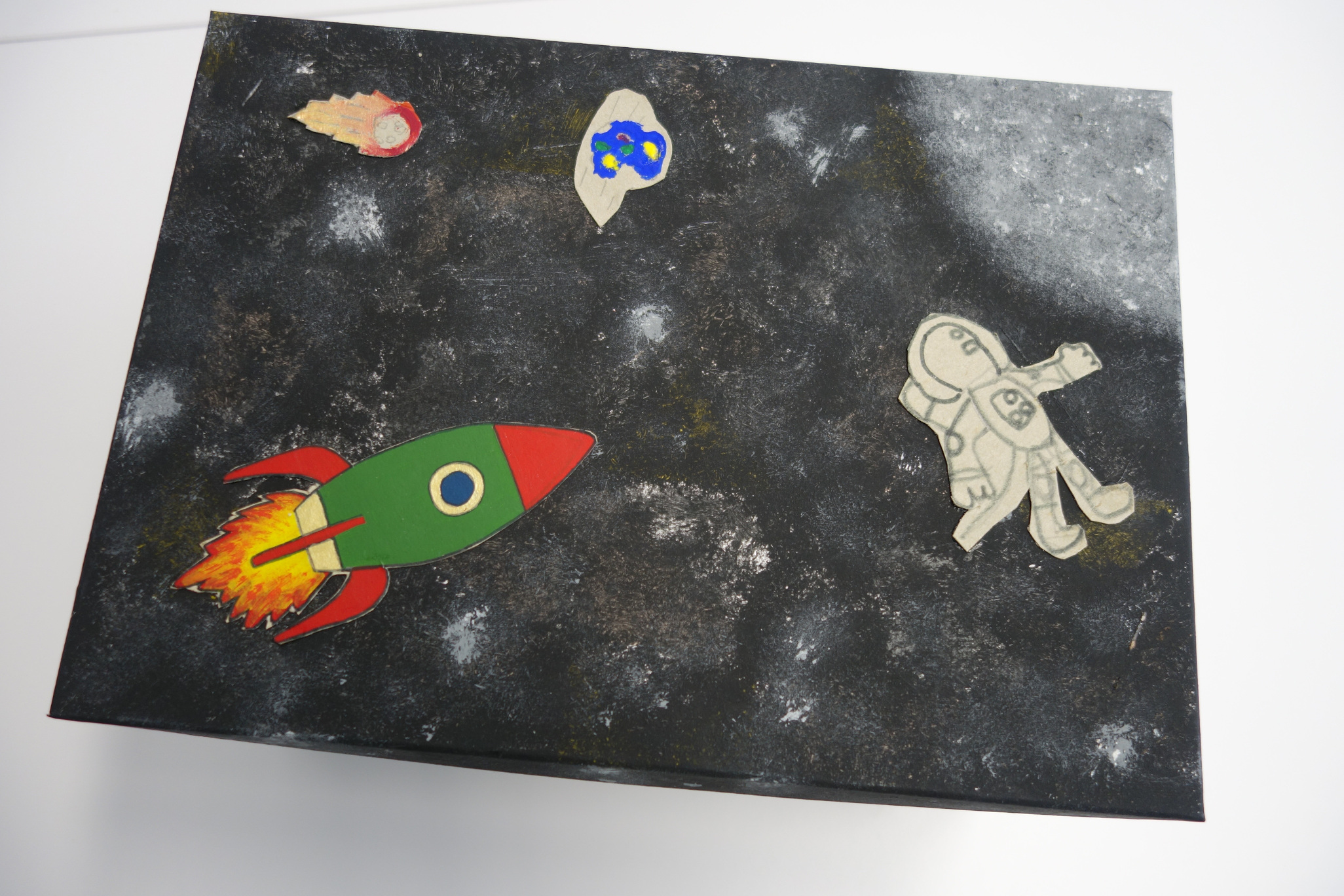At Symflower we strive for continuous improvement at all levels and areas. From our point of view this principle is only possible through joint reflection and an open feedback culture throughout the organisation. In order to make this happen we apply Scrum retrospectives on a regular basis. In this blog post we provide you an understanding of how we adapted this well-known tool from agile software development and we solve the mystery behind the fancy “retro box”.

In our experience continuous improvement of a company’s processes is only doable if you reflect together as a team. Each team member of Symflower is encouraged to express their suggestions but also their concerns. To facilitate this process we initiate a retrospective after each completed sprint, do regular retrospectives for milestones/features/bugs/incidents and also do 1:1 retrospectives.
What exactly is a retrospective anyway?
The term retrospective originates from the agile software development practice and is recommended by the Scrum framework. Each work cycle, also known as a sprint, is given a certain time window. Depending on the company, the duration of a sprint is usually between two and four weeks. At the end of the sprint, the results of that sprint are discussed in the team. The focus is not only on the output itself but should include other factors too. Such as the way how these results were achieved and how workflows can be improved for the next sprint. Additionally the retrospective also offers a protected space that should allow participants to raise their concerns or even more sensitive issues.
We at Symflower have managed to involve the whole team in this process. In this way we can ensure that every employee can express her or his ideas and subsequently put them into practice. In our experience, such opportunities greatly enhance productivity, dynamics in the team itself and above all innovation in the company.
Types of retrospectives for the entire team
There are a multitude of different methods to do a retrospective. At Symflower we vary the different methods and variants on a regular basis. This way we provide variety and increase the likelihood of new inputs. After a certain number of sprints we switch to a different methodology. For example, we worked with the Starfish method when we introduced retrospectives to the company. At the moment we are using the 4L Retrospective (Liked, Learned, Lacked, Longed for).
The methods may vary but there is always a constant: Each team member prepares in advance and makes her/his notes on a post-it. Afterwards, a random selected person talks about her/his inputs. The individual categories are gone through gradually. As soon as the first person has finished, he/she chooses the next colleague in the round. This procedure continues until everyone had their turn. In the meantime, there is always one individual who is responsible for the documentation and one who defines the retrospective actions that can be derived from the inputs.
There are many more alternatives, that are suitable for a retrospective. But all of them have one thing in common: Collecting and documenting items that were created during the sprint. However the exchange among each other should be the primary goal. An organization can learn a lot from its employees and thus continuously improve its processes.
Retrospective on specific areas of responsibility
In addition to feedback with the entire team, we also conduct smaller retrospective sessions. They usually relate to a specific topic that is currently present in the company. The directly affected team members reflect on a certain milestone/feature/bug/incident, which was particularly intensive and time consuming. For example, we did a design retrospective, which affected the redesign of our new website. The main focus was on the graphic design process and what we can learn for future projects. Based on the mutual exchange, we were able to identify certain conflict potentials and areas of improvement. Not only did we improve the efficiency of a multitude of areas, but it also lead to an improved understanding of each other, which helped to work better together as a team.
1:1 Retros between colleagues
The retrospective which we described so far, concerns the entire team. In traditional appraisal interviews you get feedback from your supervisor. What is missing, however, is a mechanism which encourages feedback between colleagues. They often have a much better insight into the working methods of their colleagues than any supervisor can have. For this reason we have introduced 1:1 retrospectives at Symflower.
Each sprint, colleagues are chosen at random which then choose another person from the team during the sprint to provide feedback to each other. These sessions are considered private to allow for deeper conversations and personal growth but more often than not especially great ideas for the company come from these talks.
So what’s up with the mysterious “retro box”?
The basic idea behind this box is that we want to ensure that no input gets lost. As soon as an employee comes across a topic he/she wants to discuss in the upcoming retrospective session, he/she writes the topic down on a note. The note is then thrown in our box. This way we ensure that no idea, criticism or positive experience is forgotten. Such a box is especially important since ideas and criticisms at the beginning of a sprint are often forgotten at the end of a sprint.
Since a plain cardboard box from the furniture warehouse was simply too boring for us, we asked our “young Symflowers” for support. Well, what shall we say: We are more than impressed by the result of what the children of our employee Mario have created for us. But see for yourself…

P.S.: Orders are still possible until further notice 😊